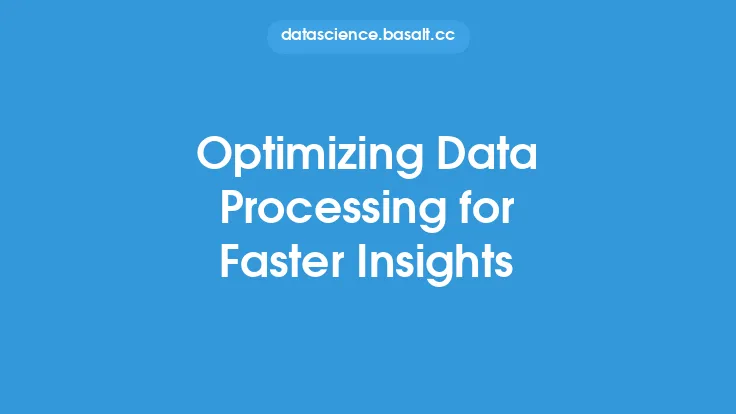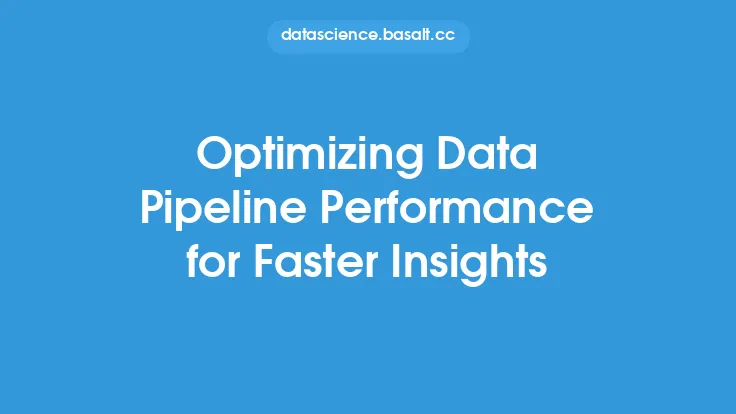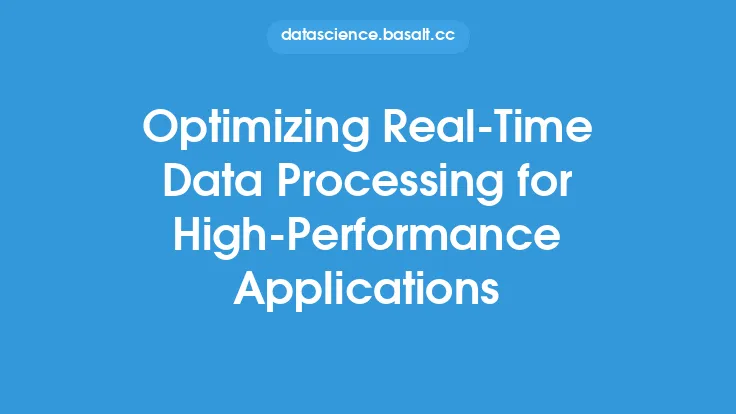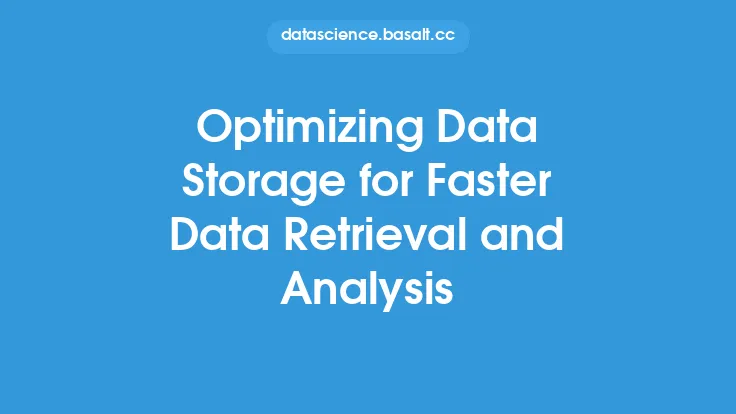When it comes to data warehousing, one of the most critical aspects is ensuring that the system can handle queries efficiently and provide fast execution times. A well-optimized data warehouse can significantly improve the overall performance of business intelligence and analytics applications, enabling organizations to make data-driven decisions quickly and effectively. In this article, we will delve into the world of data warehouse optimization, exploring the tips and techniques that can help improve query execution times and overall system performance.
Understanding Data Warehouse Performance
Data warehouse performance is a complex topic, and there are several factors that can impact query execution times. Some of the key factors include data volume, data complexity, query complexity, indexing, and system resources. As data volumes grow, query execution times can increase exponentially, making it essential to optimize the system for performance. Additionally, complex queries that involve multiple joins, subqueries, and aggregations can also slow down the system. Understanding these factors is crucial in identifying areas for optimization and implementing strategies to improve performance.
Optimizing Data Warehouse Design
A well-designed data warehouse is essential for optimal performance. One of the key design considerations is the schema, which defines the structure of the data. A star or snowflake schema can be effective in improving query performance, as it allows for efficient data retrieval and reduces the number of joins required. Additionally, denormalizing data can also improve performance, as it reduces the need for joins and subqueries. However, denormalization can also increase data redundancy and make data maintenance more complex. Therefore, it is essential to strike a balance between data normalization and denormalization to achieve optimal performance.
Indexing and Partitioning
Indexing and partitioning are two critical techniques that can significantly improve query performance. Indexing allows the database to quickly locate specific data, reducing the time it takes to execute queries. There are several types of indexes, including B-tree indexes, hash indexes, and bitmap indexes, each with its own strengths and weaknesses. Partitioning, on the other hand, involves dividing large tables into smaller, more manageable pieces, making it easier to manage and query the data. By partitioning data based on date, region, or other relevant criteria, organizations can improve query performance and reduce the amount of data that needs to be scanned.
Query Optimization
Query optimization is a critical aspect of data warehouse performance. There are several techniques that can be used to optimize queries, including rewriting queries to reduce complexity, using efficient join orders, and avoiding correlated subqueries. Additionally, using query optimization tools, such as the query optimizer in Oracle or SQL Server, can help identify performance bottlenecks and provide recommendations for improvement. It is also essential to monitor query performance regularly, using tools such as query logs and performance metrics, to identify areas for optimization and implement changes as needed.
Statistics and Histograms
Statistics and histograms are essential in helping the query optimizer make informed decisions about query execution plans. Statistics provide information about the distribution of data, including the number of rows, data types, and value distributions. Histograms, on the other hand, provide a graphical representation of the data distribution, making it easier to understand the data and identify skewness or other issues. By collecting and maintaining accurate statistics and histograms, organizations can improve the accuracy of query execution plans and reduce the risk of suboptimal performance.
Data Loading and Maintenance
Data loading and maintenance are critical aspects of data warehouse performance. Loading large volumes of data can be a time-consuming and resource-intensive process, and it is essential to optimize data loading to minimize the impact on query performance. Using techniques such as bulk loading, parallel loading, and data compression can help improve data loading times and reduce the risk of performance degradation. Additionally, regular data maintenance, including data cleansing, data transformation, and data aggregation, is essential to ensure that the data remains accurate and consistent.
Hardware and Software Configuration
Hardware and software configuration can significantly impact data warehouse performance. Using high-performance hardware, such as fast disks, large amounts of memory, and multiple processors, can improve query execution times and overall system performance. Additionally, configuring the database software, including setting optimal parameter values, configuring caching and buffering, and optimizing disk layout, can also improve performance. It is essential to monitor system performance regularly, using tools such as system logs and performance metrics, to identify areas for optimization and implement changes as needed.
Monitoring and Troubleshooting
Monitoring and troubleshooting are critical aspects of data warehouse performance. Using tools such as query logs, performance metrics, and system logs, organizations can identify performance bottlenecks and troubleshoot issues quickly and effectively. Additionally, using monitoring tools, such as Nagios or Splunk, can help detect issues before they become critical, reducing the risk of downtime and performance degradation. It is also essential to have a comprehensive troubleshooting strategy in place, including procedures for identifying and resolving issues, to minimize the impact of performance issues on business operations.
Best Practices and Conclusion
In conclusion, optimizing data warehouse performance requires a comprehensive approach that involves understanding data warehouse performance, optimizing data warehouse design, indexing and partitioning, query optimization, statistics and histograms, data loading and maintenance, hardware and software configuration, and monitoring and troubleshooting. By following best practices, such as regularly monitoring system performance, optimizing queries, and maintaining accurate statistics and histograms, organizations can improve query execution times and overall system performance, enabling them to make data-driven decisions quickly and effectively. Additionally, staying up-to-date with the latest technologies and trends, such as cloud-based data warehousing, big data analytics, and artificial intelligence, can help organizations stay ahead of the curve and achieve optimal performance in their data warehouse environments.





